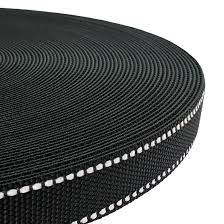Reflective tape on trucks is a critical safety measure that enhances visibility and reduces the risk of accidents on roads, especially during nighttime or in poor visibility conditions. Different countries and regions have specific regulations governing the use of reflective tape on commercial vehicles. This guide provides an overview of common regulatory requirements and best practices for applying truck reflective tape.
Global Standards and Requirements
United States
In the United States, the Federal Motor Carrier Safety Administration (FMCSA) outlines specific guidelines under the regulations FMCSA-1998-2289. These rules mandate that trailers exceeding 10,000 pounds in gross vehicle weight and trucks with a width of over 80 inches must have retroreflective sheeting or reflective tape. The material must be red and white, alternating every 12 inches, and cover at least 50% of the trailer's length on both sides, including the rear. The tape must also have a minimum width of 2 inches and be placed at a height not exceeding 60 inches from the ground.
European Union
The European Union's regulation ECE R104 specifies the use of retroreflective marking tapes on heavy goods vehicles and trailers. The tape must comply with visibility requirements, including color specifications (white, yellow, or red) depending on the vehicle's part it's applied to. The regulation also outlines the placement, such as on the sides and rear of the vehicle, to form a continuous contour that enhances visibility from all angles.
Installation and Maintenance
Proper Placement
For effective visibility, it's essential to place reflective tape at strategic locations on the vehicle. This includes the sides, rear, and lower edges of trailers and trucks. Placing tape at these locations ensures that light from headlights bounces back to drivers, making the vehicle visible from a distance of up to 1,000 feet.
Quality and Specifications
Choosing high-quality reflective tape is crucial for compliance and safety. The tape should meet the ASTM D4956 standard for Type V reflective material, indicating superior brightness and durability. It must also withstand harsh weather conditions, including rain, snow, and extreme temperatures, to maintain its reflective properties over time.
Maintenance Tips
Regular maintenance is necessary to ensure the reflective tape performs effectively throughout its lifespan. This includes cleaning the tape with a mild detergent and water to remove dirt and grime that can reduce reflectivity. Inspecting the tape for damage and wear-and-tear periodically is also essential, with replacements made as necessary to meet regulatory standards and ensure safety.

Economic and Safety Benefits
The use of reflective tape on trucks goes beyond regulatory compliance; it offers significant economic and safety benefits. Enhanced visibility reduces the likelihood of accidents, which in turn lowers insurance premiums and costs associated with vehicle repairs and downtime. Most importantly, it contributes to the safety of drivers, passengers, and pedestrians on the road.
In conclusion, adhering to the regulations for using truck reflective tape is not only a legal requirement but also a critical safety practice. By ensuring proper installation, maintenance, and compliance with global standards, fleet operators and drivers can significantly contribute to safer roadways for everyone.
